Create Your Own Comic Strips: A Drawing Tutorial
Have you ever found yourself captivated by the colorful panels of a comic strip, wishing you could create your own? Well, you're in luck! This article provides a comprehensive guide to creating your own comic strips, covering everything from concept development to character design and layout techniques for aspiring artists. Whether you're a seasoned illustrator or a complete novice, the world of comic creation is accessible to everyone. So, grab your sketchbook and let’s dive into the exciting journey of comic strip creation!
Before you jump into drawing, it's crucial to grasp the fundamental components of comic strips. Comic strips are typically composed of a series of panels that tell a story, often with a punchline or a cliffhanger. Each panel serves as a snapshot of the action, and the arrangement of these panels can significantly affect the reader's experience. You'll want to pay attention to panel structure, which refers to how the panels are laid out on the page. This includes the size and shape of each panel, as well as the spacing between them. Additionally, dialogue placement is key; it should flow naturally and complement the visuals without overwhelming them. Visual storytelling techniques, such as using facial expressions and body language, can enhance the narrative flow, drawing readers deeper into your story.
Now that you understand the basics, it’s time to brainstorm and refine your ideas. Think about the themes and genres that resonate with you. Are you drawn to humor, adventure, or perhaps a slice-of-life story? Consider the overall message you want to convey through your artwork. A great way to start is by jotting down your thoughts and ideas. You can create a mind map or a simple list of potential storylines and characters. Don’t be afraid to mix and match elements—sometimes the best ideas come from unexpected combinations!
Your characters are the heart of your comic strip, and designing memorable ones is essential for engaging your audience. Start by defining their personality traits. Are they brave, quirky, or perhaps a bit shy? Visual styles also play a significant role in character design. Think about how their appearance reflects their personality. For example, a playful character might have bright colors and exaggerated features, while a serious character could have a more muted palette and realistic proportions. Additionally, crafting backstories for your characters adds depth and relatability, making readers more invested in their journeys.
Sketching is a vital part of the character design process. It allows you to explore different looks and styles before committing to a final design. When sketching, pay attention to proportions and expressions. A character’s posture can convey a lot about their mood and personality. For instance, a confident character might stand tall with their chest out, while a timid character could hunch their shoulders. Don't forget to include unique features that make your characters stand out—these could be anything from a distinctive hairstyle to a signature accessory!
Once you have a solid design, it’s time to develop detailed character profiles. These profiles should outline your characters’ motivations, relationships, and growth throughout the comic strip. Having this information at your fingertips ensures consistency in storytelling. You might include sections like:
| Character Name | Motivation | Relationships | Character Growth |
|---|---|---|---|
| Hero | To save the world | Sidekick, Mentor | From naive to wise |
| Villain | To conquer | Rival, Henchman | From misunderstood to malevolent |
Crafting an engaging plot is vital for keeping readers invested in your comic strip. Start with a compelling beginning that hooks the reader, followed by a well-paced middle that builds tension. Remember, conflict is the engine of your story—your characters should face challenges that test their resolve. Finally, wrap it all up with a satisfying conclusion that resolves the main conflicts. Think of your plot as a rollercoaster ride: it should have ups and downs that keep your audience on the edge of their seats!
Once you have your story and characters, it’s time to focus on layout and composition. Effective layout techniques can make or break your comic strip. Pay attention to the arrangement of panels; they should guide the reader’s eye smoothly through the story. Consider how the size of each panel can convey different emotions—larger panels can emphasize significant moments, while smaller panels can create a quick pace. Visual flow is also essential; use lines and angles to direct the reader’s gaze, making it easy for them to follow the action.
Colors, textures, and backgrounds are your best friends when it comes to enhancing the mood of your comic strip. Think about how different colors can evoke emotions; for example, warm colors like red and orange can create a sense of excitement, while cool colors like blue and green can evoke calmness or sadness. Textures can add depth to your scenes, making them feel more immersive. Don’t forget about backgrounds—these can set the stage for your story and provide context for your characters’ actions.
Finally, achieving the right balance between text and imagery is crucial. Your dialogue should complement your illustrations, enhancing the storytelling without overshadowing it. Consider using speech bubbles and captions strategically; they should feel like a natural extension of the artwork. Remember, less is often more—sometimes, showing rather than telling can create a more powerful impact.
Q: What materials do I need to start creating my comic strip?
A: You can start with basic materials like pencils, erasers, and paper. As you progress, you might want to invest in inking pens, markers, or digital tools.
Q: How long does it take to create a comic strip?
A: The time it takes can vary widely depending on your experience and the complexity of your strip. A simple strip might take a few hours, while a more detailed one could take days or even weeks.
Q: Can I publish my comic strip online?
A: Absolutely! There are many platforms available where you can share your work, such as webcomic sites, social media, or your own blog.
Q: What if I struggle with drawing?
A: Don’t worry! Many successful comic artists started with little to no experience. Practice regularly, study other artists, and find your unique style.

Understanding Comic Strip Basics
When it comes to creating your own comic strips, it's essential to grasp the fundamental components that make them tick. Think of a comic strip as a mini-movie, where each panel is a scene that drives the story forward. The first thing you’ll notice is the panel structure. Typically, comic strips consist of a series of rectangular panels arranged in a sequence. These panels are the building blocks of your comic, guiding readers through the narrative.
Now, let’s dive into dialogue placement. The placement of speech bubbles is crucial. You want to ensure that the flow of conversation feels natural and that it complements the action happening in each panel. Imagine reading a comic where the dialogue is scattered haphazardly—it would be confusing, right? To avoid this, keep the dialogue bubbles close to the characters speaking and make sure they lead the reader's eye smoothly from one panel to the next.
Visual storytelling is another vital aspect of comic strips. It’s not just about what the characters say; it’s about what they do and how they express themselves visually. For instance, a character's facial expressions and body language can convey a wealth of emotions without uttering a single word. This is where show, don’t tell comes into play. Use visuals to enhance the narrative and engage your audience. Think of it as painting a picture with your words and images, creating a rich tapestry that pulls readers into your world.
Here are some key elements to consider when crafting your comic strip:
- Panel Arrangement: The way you arrange your panels can create rhythm and pacing. Experiment with different layouts to see what works best for your story.
- Character Expressions: Use exaggerated facial expressions to convey emotions clearly. This adds depth and humor to your comic.
- Background Details: Don’t forget about the backgrounds! They can set the mood and context for your scenes. A bustling city street or a serene park can dramatically change how your story feels.
In summary, understanding the basics of comic strips is about mastering the interplay between visuals and text. By focusing on panel structure, dialogue placement, and visual storytelling, you can create engaging and memorable comic strips that resonate with your audience. So, grab your pencil, and let your imagination run wild!

Developing Your Comic Strip Concept
Creating a comic strip is like planting a seed in a garden; it requires careful consideration and nurturing to grow into something beautiful. The first step in this artistic journey is to develop a solid concept that will serve as the foundation for your comic strip. Think of your concept as the backbone of your story, providing structure and direction as you bring your characters and plot to life.
To kickstart your creative process, take some time to brainstorm ideas. Grab a notebook or open a digital document and let your thoughts flow freely. Consider what themes resonate with you. Are you drawn to humor, adventure, romance, or perhaps a mix of genres? This initial brainstorming session is crucial. It's where you can let your imagination run wild without the constraints of perfection. Remember, every great comic strip started as just an idea!
Once you have a collection of ideas, it’s time to refine them. Ask yourself some important questions: What message do you want to convey? What emotions do you want your readers to feel? By focusing on these aspects, you can hone in on a concept that not only excites you but also engages your audience. For example, if you’re passionate about environmental issues, you might create a comic strip that highlights the adventures of a superhero who fights against pollution. The clearer your message, the more impactful your comic will be.
Now, let’s talk about the importance of genre. Your choice of genre will significantly influence the tone and style of your comic strip. Whether you choose to create a lighthearted comedy or a suspenseful thriller, make sure it aligns with your concept. Here’s a quick breakdown of popular comic strip genres:
| Genre | Description |
|---|---|
| Comedy | Focuses on humor and entertaining scenarios. |
| Adventure | Involves exciting journeys and challenges. |
| Fantasy | Explores magical worlds and mythical creatures. |
| Drama | Centers around emotional narratives and character development. |
By choosing a genre that resonates with your concept, you can create a cohesive and engaging narrative that keeps your readers coming back for more. Additionally, consider the audience you want to reach. Tailoring your comic strip to a specific demographic can help you connect with readers on a deeper level.
In conclusion, developing your comic strip concept is all about exploration and refinement. Embrace the creative process, and don’t be afraid to experiment with different ideas and themes. Remember, the most captivating stories often come from the heart, so let your passion shine through in your work. As you move forward, keep your concept in mind as a guiding light, steering your artistic journey toward a successful comic strip.
- How do I know if my concept is good? Test it out with friends or fellow artists to get feedback.
- Can I mix genres in my comic strip? Absolutely! Mixing genres can create unique and engaging stories.
- What if I get stuck on my concept? Take a break, look for inspiration in other media, or revisit your brainstorming notes.
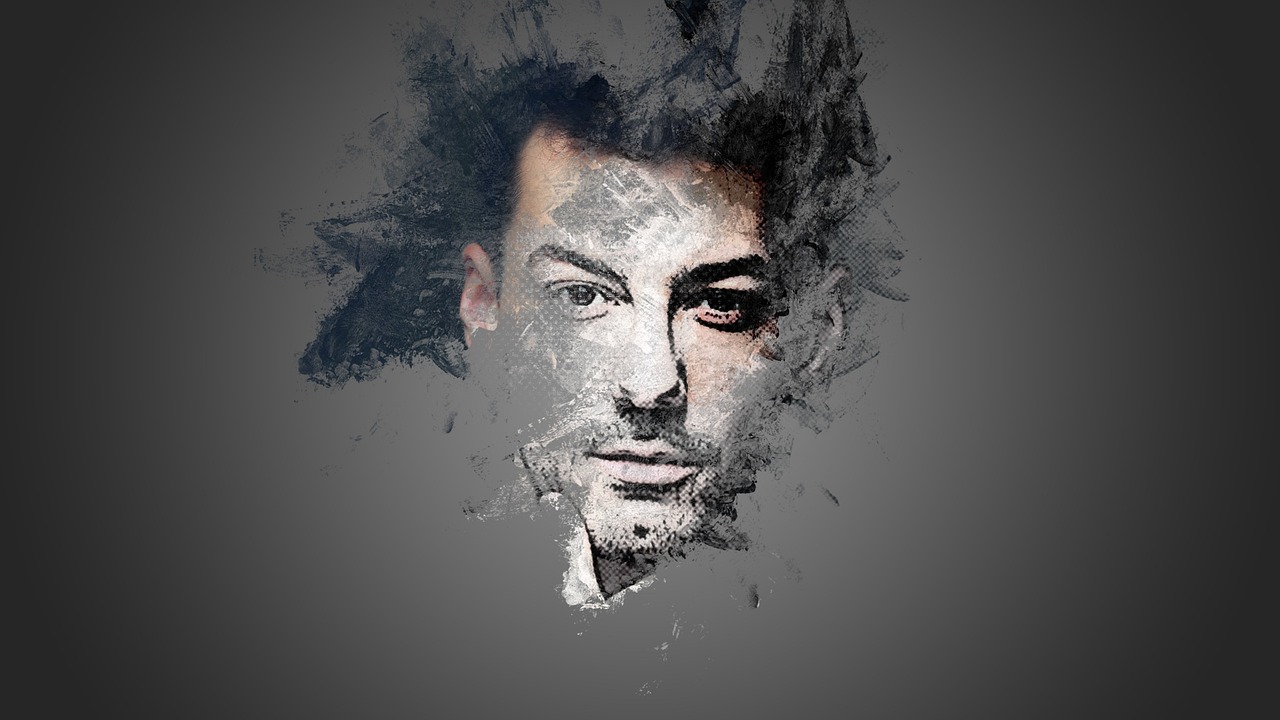
Character Creation Techniques
Creating memorable characters is one of the most exciting parts of making your own comic strips. Think of your characters as the heart of your story; they are what will keep your readers coming back for more. To build characters that resonate with your audience, you need to dive deep into their personalities, visual styles, and backstories. It's like crafting a fine dish—each ingredient must be chosen with care to create a delightful experience.
First, let's talk about personality traits. What makes your character tick? Are they brave, shy, sarcastic, or a little quirky? Defining these traits will not only help you write their dialogue but also influence their actions and decisions throughout your comic. For example, a brave character might rush into danger, while a cautious one would think twice before taking risks. This creates a dynamic that can lead to interesting conflicts and growth.
Next, consider the visual style of your characters. The way they look should reflect their personality. A character with a bright, colorful wardrobe might be outgoing and fun-loving, while a more subdued palette could indicate a serious or introverted nature. Pay attention to their physical features too; unique traits like scars, hairstyles, or even unusual eye colors can make them stand out. This is where sketching becomes invaluable, as it allows you to experiment with different designs before settling on the final look.
Now, let’s not forget about backstories. Every character has a history that shapes who they are in your comic. What events in their past have influenced their current behavior? Did they face any significant challenges or triumphs? Understanding their background will enable you to write more authentic dialogue and reactions. For instance, a character who has overcome adversity might have a different outlook on life compared to one who has always had it easy. This depth adds richness to your storytelling.
To help you get started, consider creating a character profile for each of your main characters. This profile can include:
- Name
- Age
- Personality traits
- Physical description
- Backstory
- Goals and motivations
By filling out these profiles, you can ensure consistency in your character's actions and dialogue throughout your comic strip. It's like having a roadmap for your character's journey, making it easier to navigate their development as the story unfolds.
In conclusion, character creation is a multifaceted process that involves understanding personality, visual representation, and backstory. When you invest time in developing these aspects, your characters will not only come alive on the page but also resonate deeply with your readers. Remember, the more relatable and complex your characters are, the more invested your audience will become in their journey.
Q: How do I know if my character is relatable?
A: Relatable characters often reflect real human emotions and experiences. Consider incorporating common struggles or desires that many people can identify with, such as love, loss, or the quest for identity.
Q: Should I base my characters on real people?
A: Absolutely! Drawing inspiration from real-life individuals can add authenticity to your characters. Just remember to blend traits and experiences to create unique personalities that fit your story.
Q: How many characters should I create for my comic strip?
A: It depends on your story! Start with a few main characters and add supporting characters as needed. Too many characters can complicate your narrative, so focus on depth over quantity.
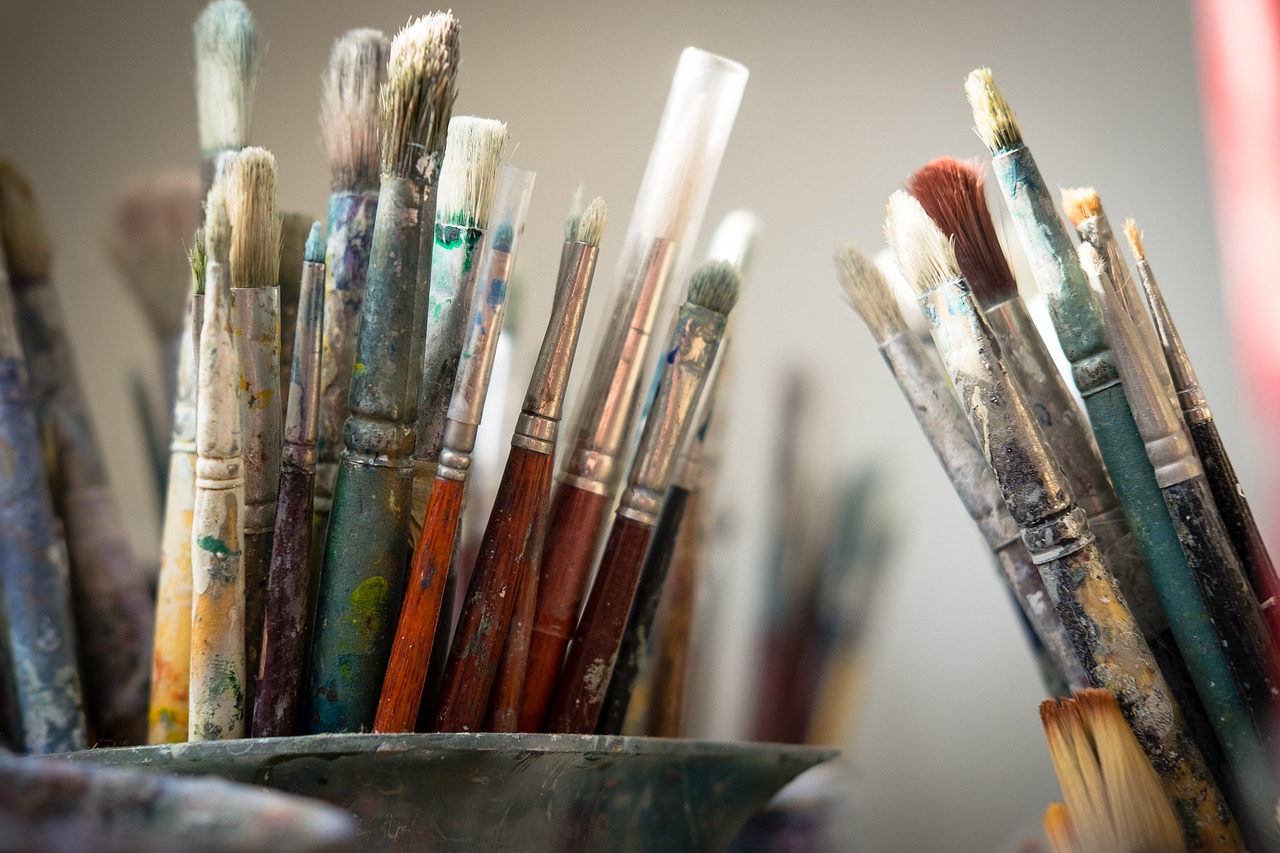
Sketching Character Designs
When it comes to , the process is like laying the foundation for a grand building. You wouldn’t start constructing a skyscraper without a solid base, right? Similarly, your character sketches are the essential groundwork that brings your imaginative creations to life. The key is to focus on proportions, expressions, and unique features that will make your characters resonate with your audience.
First things first, let’s talk about proportions. Every character has a unique shape and size that reflects their personality. For instance, a tall, lanky character might convey a sense of awkwardness or humor, while a short, stocky figure could suggest strength or stubbornness. To master proportions, consider using the “head method”—a technique where the height of your character is measured in heads. For example, a character that is 8 heads tall might look more heroic, while one that is 4 heads tall would appear more comical. This method helps maintain consistency in your designs.
Next up, we have expressions. A character’s face is their canvas, and the emotions they display can make or break your story. Think about how a raised eyebrow or a wide grin can convey an entire range of feelings. To practice, sketch a simple character and create a series of expressions for them—happy, sad, angry, surprised. This not only enhances your character’s personality but also allows readers to connect more deeply with their journey. Remember, the eyes are the windows to the soul, so pay extra attention to them!
Now, let’s not forget about those unique features that set your characters apart. Whether it’s a quirky hairstyle, a distinctive outfit, or an unusual accessory, these elements add depth and intrigue. Think of characters like Shrek or Harry Potter; their unique traits are what make them memorable. As you sketch, allow your imagination to run wild. Maybe your character has an oversized hat that they never take off, or perhaps they have a scar that tells a story of its own. These details not only make your character visually interesting but can also hint at their backstory.
Incorporating dynamic poses is another crucial aspect of character sketching. A character in motion can convey energy and excitement, drawing readers into the action. To practice this, try sketching your character in various poses—running, jumping, or even just leaning against a wall. Use reference images or even mirror yourself to see how your body moves. This practice will help you understand how to capture movement and bring your characters to life on the page.
Lastly, remember that sketching is a process. Don’t be afraid to make mistakes or revisit your designs. Each sketch is a step toward discovering your character's true essence. As you refine your sketches, you’ll find that the character develops a life of their own, often surprising you with their depth and personality. So grab your pencil, unleash your creativity, and start sketching!
- What materials do I need to start sketching?
You can start with basic materials like pencils, erasers, and sketch paper. As you progress, you might want to explore markers, colored pencils, or digital tools. - How do I improve my character design skills?
Practice is key! Study other artists, take classes, and don’t shy away from experimenting with different styles and techniques. - Is it necessary to create backstories for my characters?
While it’s not mandatory, having a backstory can greatly enhance your character’s depth and help you write more engaging narratives.
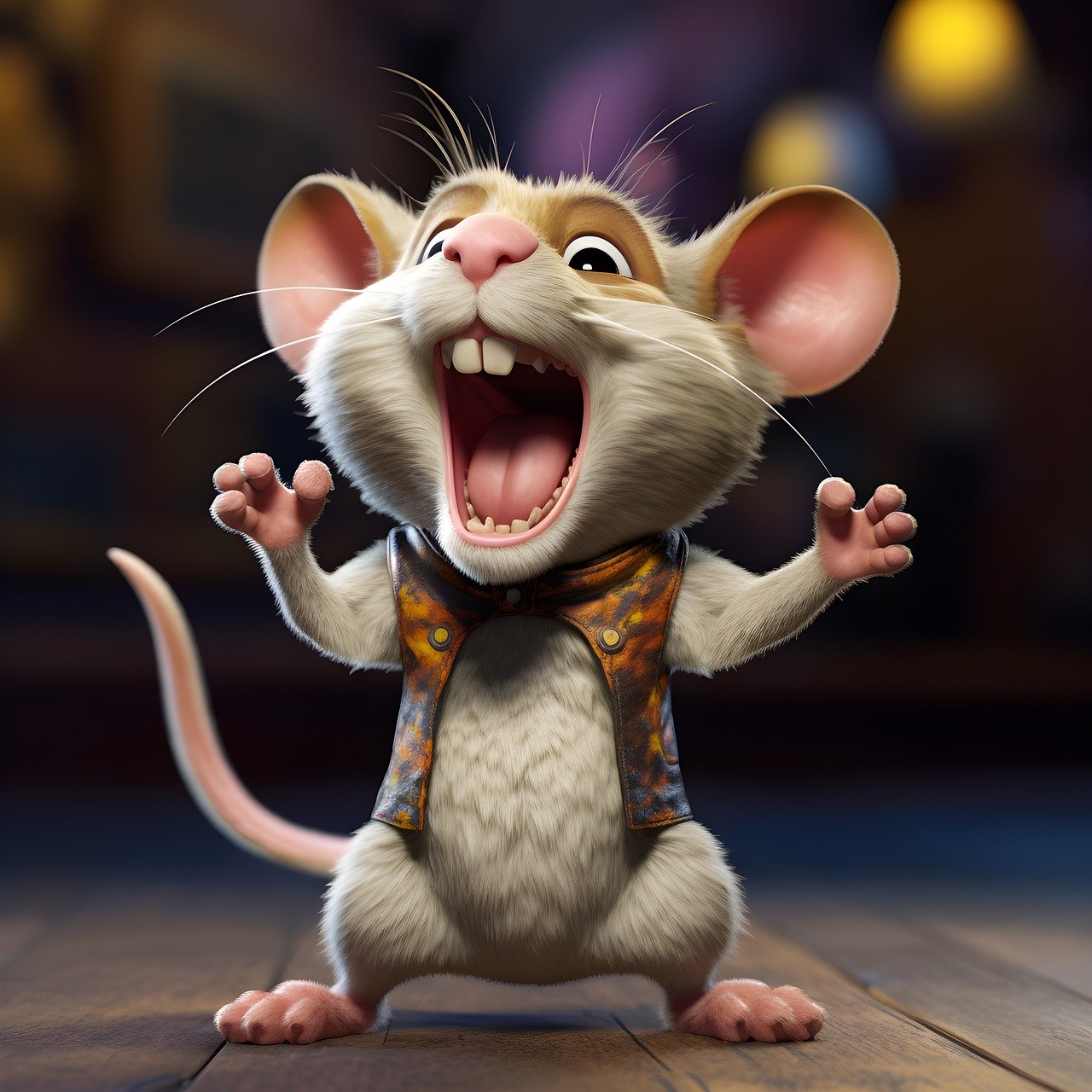
Creating Character Profiles
Creating character profiles is an essential step in the comic strip development process. Think of it as building a solid foundation for a house; without it, everything else might crumble. A well-crafted character profile not only outlines your character's physical appearance but also dives deep into their motivations, relationships, and personal growth. This depth ensures that your characters resonate with the audience, making them more relatable and memorable.
To start, consider the core aspects of your character. What drives them? What are their fears? What do they desire most? By answering these questions, you create a roadmap that guides your storytelling. Here’s a simple breakdown of key elements to include in your character profiles:
- Name: What do they go by?
- Age: How old are they?
- Appearance: What do they look like? Consider height, hair color, clothing style, etc.
- Personality Traits: Are they introverted, extroverted, optimistic, or cynical?
- Backstory: What events shaped their life? This could include family background, significant experiences, or even traumas.
- Goals and Motivations: What do they want to achieve? What drives their actions?
- Relationships: Who are their friends, enemies, or love interests? How do these relationships affect their journey?
- Character Arc: How will they change throughout the story? What lessons will they learn?
Once you’ve gathered this information, it’s time to put it all together into a cohesive profile. This can be as simple or as detailed as you like, but the key is to ensure that it serves as a reference point throughout your comic strip creation process. Think of your character profile as a living document; you can always revise it as your story evolves. Characters often surprise us, and sometimes their journeys take unexpected turns!
Moreover, consider creating a table to visualize your character profiles. This can help you quickly reference important details while you’re working on your comic strip. Here’s a sample layout for a character profile table:
| Attribute | Description |
|---|---|
| Name | [Character's Name] |
| Age | [Character's Age] |
| Appearance | [Description of Appearance] |
| Personality Traits | [Key Traits] |
| Backstory | [Brief Backstory] |
| Goals | [Character's Goals] |
| Relationships | [Key Relationships] |
| Character Arc | [How They Will Change] |
In summary, creating character profiles is like painting a detailed portrait of your characters before they step onto the stage of your comic strip. It adds layers of complexity and depth that engage your readers and keep them invested in your story. So don’t skip this crucial step! Take the time to flesh out your characters, and you’ll find that your comic strip will come alive in ways you never imagined.
Q: How detailed should my character profiles be?
A: It depends on your story! Some characters may need more detail than others, but aim to include key traits that drive their actions and development.
Q: Can I change my character profiles as I write?
A: Absolutely! Characters often grow and evolve as the story progresses, so feel free to update their profiles as needed.
Q: What if I have too many characters?
A: Focus on the main characters first. You can create profiles for secondary characters later, but make sure the primary ones are well-developed to anchor your story.

Plot Development Strategies
When it comes to creating an engaging comic strip, the plot is your backbone; it holds everything together and keeps your readers glued to the page. Think of it as the thread that weaves through your characters and settings, making sense of the chaos and guiding your audience on a thrilling journey. So, how do you craft a plot that not only captivates but also resonates? Let's dive into some effective strategies!
First off, you need to establish a clear structure. Every compelling story has a beginning, a middle, and an end. This classic format is not just a guideline; it's a blueprint for success! Start by introducing your characters and setting in the beginning, then build up the tension through conflict in the middle, and finally, deliver a satisfying resolution at the end. This structure will help your readers feel a sense of progression and closure.
Now, let’s talk about conflict. Without it, your plot can feel as flat as a pancake. Conflict is what drives the story forward and keeps the audience invested. It can be external, like a villain trying to thwart your hero's plans, or internal, such as a character grappling with their own fears and doubts. The key is to make sure that the conflict is relatable and meaningful. Readers love to see characters struggle, learn, and grow through their challenges.
Another important aspect of plot development is pacing. You don’t want your readers to feel like they’re on a roller coaster that never quite gets to the top. Use a mix of fast-paced action scenes and slower, reflective moments to create a rhythm that keeps readers engaged. Think of pacing like a musical score; it should ebb and flow, creating tension and release at just the right moments.
Moreover, consider the motivation behind your characters' actions. What drives them? What are their goals? Understanding their motivations will help you create believable and compelling story arcs. Each character should have a clear purpose that ties back into the central theme of your comic strip. This not only makes your characters more relatable but also enriches the overall narrative.
Lastly, don't forget the importance of foreshadowing. This technique allows you to drop subtle hints about what’s to come, creating anticipation and intrigue. It’s like planting seeds throughout your story that will bloom later on. When done right, foreshadowing can make your plot feel cohesive and well thought out, rewarding attentive readers with a satisfying payoff.
To summarize, here are some key strategies for effective plot development:
- Establish a clear structure: Beginning, middle, and end.
- Create conflict: Introduce challenges that resonate with the audience.
- Manage pacing: Balance action with reflective moments.
- Define character motivations: Ensure characters have clear goals.
- Use foreshadowing: Drop hints to build anticipation.
By implementing these strategies, you can elevate your comic strip from a simple collection of drawings to a captivating story that leaves a lasting impact. Remember, the plot is where the magic happens, so take your time to develop it thoughtfully. Happy storytelling!
Q: How long should my comic strip be?
A: The length of your comic strip can vary, but typically, a standard comic strip consists of 3 to 6 panels. Focus on telling a complete story within that space.
Q: What if I struggle with writer's block?
A: Writer's block is common among creators. Try brainstorming ideas with friends, taking a break, or even sketching random scenes to spark your creativity.
Q: How can I make my characters more relatable?
A: Develop your characters' backstories and give them flaws. Readers connect with characters who face challenges and grow over time.
Q: Is it necessary to have a theme in my comic strip?
A: While not mandatory, having a theme can provide depth and coherence to your story, making it more impactful for your readers.
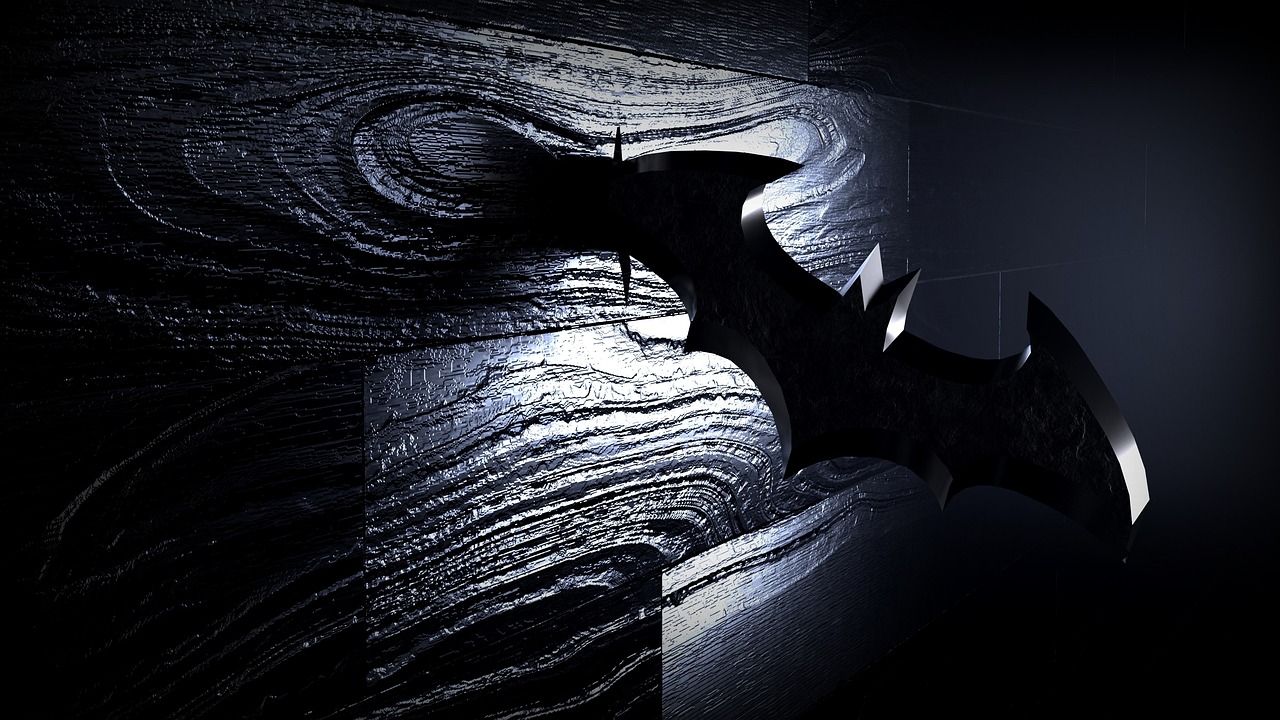
Mastering Layout and Composition
When it comes to creating captivating comic strips, mastering layout and composition is crucial. Think of your comic strip as a stage where every element plays a role in telling your story. Just like a director carefully arranges actors and props, you need to consider how to arrange your panels and images to guide the reader's eye. The layout is not just about where things go; it’s about creating a flow that feels natural and engaging. Imagine reading a comic where the panels are jumbled—confusing, right? A well-structured layout keeps readers hooked and enhances their understanding of the narrative.
One of the first things to consider is the panel arrangement. Panels are the building blocks of your comic strip, and how you arrange them can significantly affect the pacing and rhythm of your story. For instance, using larger panels for dramatic moments can create a sense of importance, while smaller panels might speed up the action. A common technique is to vary the size and shape of panels to reflect the emotional tone of the scene. Here’s a simple breakdown of panel types:
| Panel Type | Effect |
|---|---|
| Large Panels | Emphasize key moments or emotions |
| Small Panels | Create quick pacing or action |
| Irregular Panels | Add visual interest and dynamic storytelling |
Next, consider the visual flow. This refers to how the reader's eye moves across the page. You want to create a path that feels intuitive. A common practice is to arrange panels from left to right and top to bottom, mirroring the way we read. However, don’t be afraid to break this rule for effect! Sometimes, an unexpected layout can surprise the reader and add excitement to your storytelling.
Another essential aspect is the guiding elements within your panels. Using arrows, lines, or even the direction of characters’ gazes can lead the reader through the story. For example, if a character is looking off-panel, it can create a sense of curiosity and encourage the reader to follow their gaze, potentially revealing something significant in the next panel. This technique not only enhances engagement but also deepens the narrative.
Lastly, remember that balance is key in composition. You want to ensure that text and images complement each other without one overpowering the other. Too much dialogue can clutter a panel, making it hard to appreciate the artwork. Conversely, minimal text in a busy panel can leave readers confused about what’s happening. Strive for a harmony where both elements work together seamlessly. A good rule of thumb is the 60/40 rule: let 60% of the panel be visual and 40% be text. This balance allows the artwork to shine while still conveying the necessary dialogue.
- What is the best way to start designing my comic strip layout?
Begin by sketching your ideas on paper. Experiment with different arrangements and see what feels right for your story. - How can I improve the visual flow of my comic strip?
Use directional elements like character movements, speech bubbles, and panel placement to guide the reader’s gaze naturally. - Is it important to stick to traditional panel shapes?
Not at all! Feel free to explore irregular shapes and sizes to convey emotions and enhance storytelling.
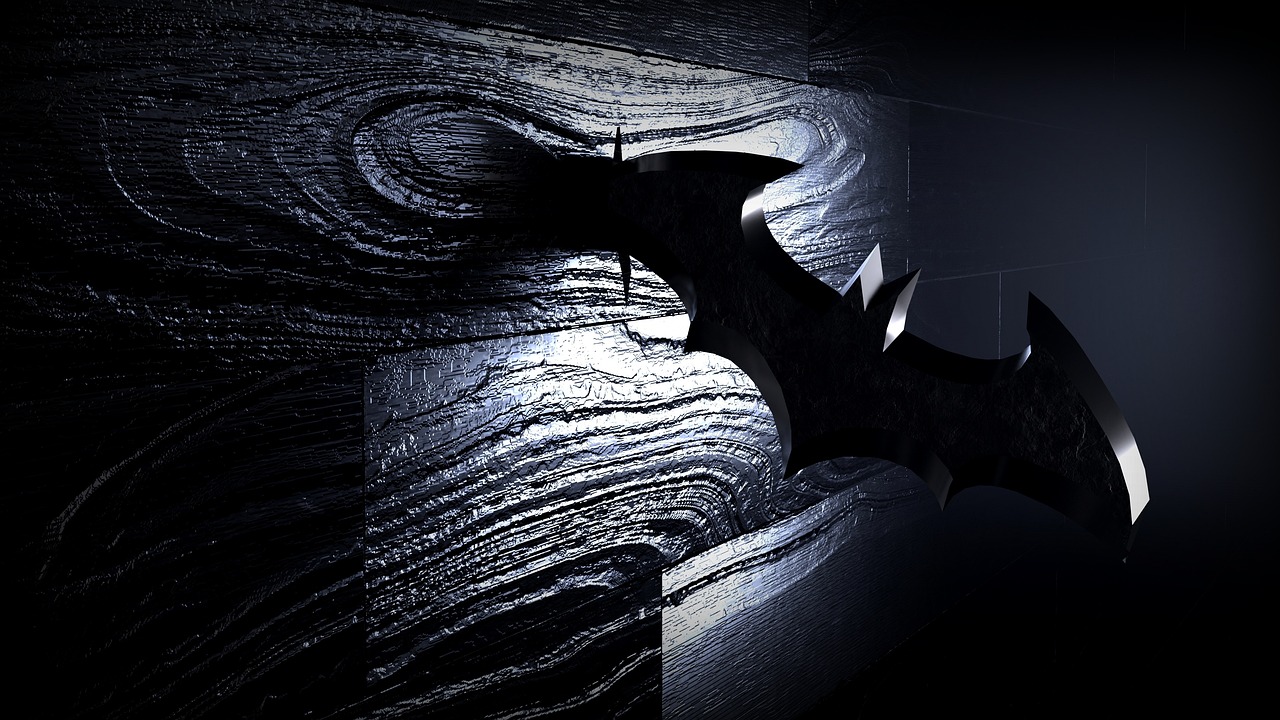
Utilizing Visual Elements
When it comes to creating a captivating comic strip, visual elements are your best friends. They not only enhance the storytelling but also create an immersive experience for your readers. Think of your comic strip as a movie; the visuals set the scene, convey emotions, and drive the narrative forward. So, how do you effectively utilize these elements? Let’s dive in!
First and foremost, color plays a crucial role in evoking emotions and setting the tone. For instance, warm colors like reds and yellows can create a sense of excitement or urgency, while cooler colors like blues and greens can evoke calmness and serenity. Imagine a superhero comic strip bursting with action; vibrant colors can amplify the thrill! On the other hand, a slice-of-life comic might benefit from softer hues to create a more relatable atmosphere.
Next up is texture. This can add depth and dimension to your artwork. Think about how different textures can influence the mood of a scene. For example, a rough texture can convey a gritty urban environment, while a smooth texture can suggest a whimsical, dream-like quality. You can create texture through various techniques, such as cross-hatching or stippling, to give your comic strip a unique flair.
Another important visual element is the background. Often overlooked, backgrounds are essential for setting the scene and providing context. A well-drawn background can transport your readers into the world you’ve created. Consider using a layered approach where the background complements the characters without overshadowing them. This way, your characters remain the focal point, while the background enriches the narrative.
When combining these elements, it’s vital to maintain a balanced composition. You want your panels to guide the reader’s eye smoothly from one scene to the next. This can be achieved through strategic placement of characters and backgrounds, as well as the use of leading lines. For example, if your character is pointing or looking in a certain direction, position the next panel so that it naturally leads the reader’s gaze. This creates a seamless flow that keeps readers engaged.
Lastly, don't forget about symbolism. Incorporating symbols can add layers of meaning to your comic strip. A simple object, like a broken clock, can symbolize lost time or regret, while a blooming flower can represent hope and new beginnings. These elements can resonate deeply with your audience, making your comic strip not just a visual treat, but a thought-provoking experience.
In conclusion, utilizing visual elements effectively can transform your comic strip into a powerful storytelling medium. By paying attention to color, texture, background, composition, and symbolism, you can create a visually stunning narrative that captivates your readers and leaves a lasting impression.
- What is the best way to choose a color palette for my comic strip?
Consider the emotions you want to convey and choose colors that align with those feelings. Tools like Adobe Color can help you create harmonious palettes. - How can I improve my background drawing skills?
Practice drawing different environments and study real-life references. Start simple and gradually add details to enhance depth. - What are some effective ways to balance text and images?
Ensure that your dialogue complements the visuals by keeping it concise. Use speech bubbles and captions to guide the reader without overwhelming them.

Balancing Text and Images
When it comes to creating comic strips, achieving a harmonious balance between text and images is crucial. Think of your comic as a dance where both elements must move in sync to create a captivating performance. If one outshines the other, the entire piece can feel off-kilter, leaving readers confused or disengaged. So how do you strike that perfect balance? Let’s dive into some essential tips!
First and foremost, consider the functionality of both text and images. Text is your voice, conveying dialogue, thoughts, and important narrative details. On the other hand, images are your visual storytelling tools, providing context and emotion. When used together effectively, they can elevate your comic strip to new heights. For instance, a character’s expression can say so much more than words alone, while clever dialogue can add layers to an otherwise straightforward scene.
One effective method for balancing these elements is to limit the amount of text in each panel. Too much dialogue can overwhelm the reader, forcing them to choose between reading and appreciating the artwork. A good rule of thumb is to keep your text concise—think of it as seasoning your dish; a pinch goes a long way, but too much can ruin the flavor. Aim for clarity and brevity, allowing the visuals to shine through. You might even consider using speech bubbles and thought clouds to separate different types of dialogue, making it easier for readers to follow along.
Another important aspect is the placement of text within your panels. The positioning of speech bubbles should guide the reader's eye naturally through the artwork. For example, placing bubbles at the top left and bottom right encourages a natural flow from left to right, mimicking the way we read. Also, consider the size of your text; larger fonts can draw attention to key moments or punchlines, while smaller text can convey background conversations or thoughts that are less critical to the main narrative.
Incorporating visual elements such as colors and textures can also aid in balancing text and images. For instance, using a muted background can make your text pop, ensuring it stands out without overshadowing the illustrations. Additionally, the use of contrast can enhance readability. Dark text on a light background (or vice versa) creates a visual hierarchy that helps readers navigate your comic more smoothly.
Finally, always remember to test your layout. Share your comic strip with friends or fellow artists to gather feedback on the balance between text and images. Sometimes, an outsider's perspective can reveal areas that need adjustment. After all, what might seem clear to you could be confusing to someone else. So, don’t hesitate to tweak and refine until you achieve that perfect equilibrium!
- How do I know if I have too much text in my comic strip? If readers are struggling to keep up with the dialogue or if they seem to miss key visual elements, it might be time to cut back on the text.
- What font size is best for comic strips? Generally, a font size between 10-14 points is recommended for readability, but this can vary based on your specific style and audience.
- Can I mix fonts in my comic strip? Yes, but be cautious! Stick to one or two complementary fonts to maintain a cohesive look.
Frequently Asked Questions
- What materials do I need to create my own comic strips?
To get started with your comic strip, you'll need some basic materials. A sketchbook or drawing paper is essential, along with pencils and erasers for sketching. If you prefer digital art, a tablet and drawing software can work wonders. Don't forget about inking pens and coloring tools like markers or digital brushes to bring your characters to life!
- How can I come up with a unique comic strip concept?
Brainstorming is key! Start by jotting down ideas based on your interests, experiences, or current events. Think about themes or messages you want to convey. You can also look at popular genres and add your twist to them. Remember, even mundane situations can lead to hilarious or heartwarming stories!
- What are the best practices for character design?
Character design is all about making them memorable! Start by defining their personality traits and backstory. Sketch different visual styles and expressions to see what fits best. Don’t hesitate to experiment—sometimes the quirkiest designs can become fan favorites!
- How do I effectively balance text and images in my comic strip?
Finding the right balance between text and imagery is crucial. Use dialogue sparingly; let your artwork do a lot of the storytelling. When you do use text, ensure it complements the visuals rather than cluttering the panels. Think of it like a dance—both elements should move together seamlessly!
- What are some tips for mastering layout and composition?
Layout is about guiding your reader’s eye through the story. Use varying panel sizes to create emphasis and pacing. Keep visual flow in mind; the reader should naturally move from one panel to the next. Practice makes perfect—studying other comic strips can also provide great insights!
- How can I develop engaging plots for my comic strips?
Crafting an engaging plot involves creating relatable conflicts and resolutions. Start with a strong premise, then build your story with a clear beginning, middle, and end. Don’t forget to include twists and turns to keep readers on their toes. Think of your plot as a rollercoaster ride—full of ups, downs, and unexpected thrills!



















